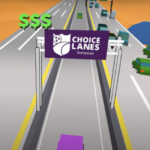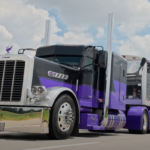The issue of mandating side underride guards for trailers is being reconsidered by a federal transportation safety agency.
On Tuesday, the National Highway Traffic Safety Administration (NHTSA) released an Advance Notice of Proposed Rulemaking, indicating that they are considering implementing regulations regarding side underride guards. The agency said in a statement that “impact guards are designed to absorb energy and prevent a passenger vehicle involved in a crash with a large truck or trailer from sliding under the impacted trailer, which causes severe injuries and fatalities.”
The Advance Notice of Proposed Rulemaking (ANPR) was prompted by both a petition from the Truck Safety Coalition and a provision in the Bipartisan Infrastructure Law. This law mandates that the transportation secretary conduct research on the effectiveness of side underride guards and assess their feasibility, benefits, costs, and potential impact on intermodal equipment, freight mobility, and freight capacity for new trailers.
The ANPRM regarding side underride guards has not been officially published in the Federal Register yet. However, once it is published, the National Highway Traffic Safety Administration will invite comments from the public for a period of 60 days.
The Owner-Operator Independent Drivers Association recently expressed their opposition to side underride guards and urged regulators to consider the input of drivers when making decisions about safety measures. They argued that the costs of implementing these guards on trailers would exceed the benefits, and also raised concerns about the advisory panel that will be created to make recommendations on the issue.
“NHTSA’s latest research once again indicates there is absolutely no reason to mandate side underride guards on commercial trucks,” said Todd Spencer, president of OOIDA, in a statement from the organization. “The rush to mandate every gadget marketed as a safety device over the objections of professional drivers is a major reason crash rates continue to rise. We will not see improvements in highway safety until lawmakers and federal regulators prioritize the expertise of professional drivers above other interest groups.
“Proponents of side underride guards have never demonstrated how these devices will perform in highway conditions, yet we’re wasting more time reviewing another potential regulatory mandate where the costs outweigh the benefits. To make matters worse, we now have an advisory panel in place that gives more influence to representatives who have no clue how to operate a heavy vehicle than those who understand the serious operational challenges and hazards created by side underride guards. Are we the only ones who see why this is not the way to develop sound regulations?”
The National Highway Traffic Safety Administration (NHTSA) has announced the formation of an Advisory Committee on Underride Protection, whose members will be responsible for providing recommendations to the Secretary of Transportation regarding safety regulations related to underride crashes.
The 16 members selected to serve on the committee include:
- Marianne Karth and Jane Mathis to represent families of underride crash victims
- Harry Adler and Jennifer Tierney to represent truck safety organizations
- Lee Jackson and Aaron Kiefer to represent motor vehicle crash investigators
- Adrienne Gildea to represent law enforcement
- Daniel McKisson to represent labor organizations
- Jeff Bennett and Jeff Zawacki to represent motor vehicle engineers
- Matthew Brumbelow and Claire Mules to represent the insurance industry
- Dan Horvath and Doug Smith to represent motor carriers, including independent owner-operators
- John Freiler and Kristin Glazner to represent truck and trailer manufacturers.
“Safety is at the core of everything we do,” NHTSA Deputy Administrator Sophie Shulman said. “The selection and establishment of this committee is a step forward in saving lives and fulfilling the goals of the Bipartisan Infrastructure Law. This committee will inform future actions and ensure that key stakeholders have a seat at the table on this important issue.”





